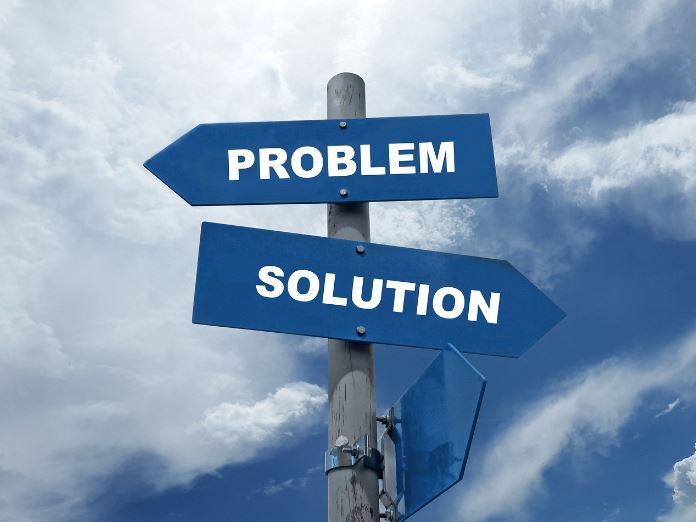The Dupe phenomenon

Dupes are legal and openly marketed as alternative options to the original products, often at a lower price. They are intended to provide a similar experience or aesthetic appeal at a more affordable price. Manufacturers of dupes typically market their products openly as alternatives or “inspired by” certain brands or products. They do not claim to be the original products and often have their own branding or labeling to avoid confusion. This means that they are legitimate products, as long as they do not infringe on any copyright, trademark, or patent rights of the original products.
Counterfeits are unauthorized replicas or copies of branded products which are produced with the intent to deceive consumers into believing they are purchasing genuine items. Counterfeit products are designed to mimic the appearance, logos, trademarks, and packaging of the original products, aiming to pass off as authentic. Counterfeits are illegal, since they involve unauthorized copying or replication of protected intellectual property, including trademarks, logos, and copyrights. Producing, selling, or purchasing counterfeit products can result in legal penalties.

Unfortunately, not many people understand the difference between look-alike dupes and illegal counterfeits.
In recent years content around dupes has surged especially on TikTok: The hashtag #dupe has now gained more than 3 billion views on the app. A lot of bloggers and influencers are actively promoting copycats – both dupes and counterfeits. Finding dupes has escalated into one of the most popular trends in 2023 and TikTok functions as an effective dupes search engine.
Why dupes?
The reasoning behind dupes is that anyone can climb the social hierarchy of popular designer items by taking a shortcut with a dupe. The attraction of a product dupe is to get a desired look for less, and also to spread the details of the made purchase. The aim of a dupe is to recreate the product or look as closely as possible, but at a significantly lower cost.
Non-branded goods, be it clothing, accessories or cosmetics, have long been seen as a definite no-no. While cheaper brands have always existed side by side with designer and branded products, especially in the fashion scene, dupes have never been so openly worn before. It has become an achievement and especially cool among young people born between the late 1990s and the early 2010s, to find and share the dupes of expensive designer goods. And TikTok is the platform to share all those dupes on with likeminded people. The platform has become a hub for trends and viral challenges. Just about any content where you present alternatives to desired designer items seem to gather views on TikTok. Gen Z has realized that presenting dupes is a successful way to create content.
The format of TikTok, with its short and engaging videos, makes it easy for creators to quickly showcase and explain dupes in an accessible and entertaining way. As a result, TikTok has become a go-to platform for users seeking budget-friendly alternatives and hacks, and the platform has greatly contributed to the rise of the dupes culture.
It is understandable that the dupes trend has become so attractive among the most active TikTok users who range from Gen Z to millennials. These age groups are focused on continuously giving out a perfect image on social media, and a person’s outer appearance and style has become a significant trait. These generations are tirelessly following fashion trends, but do not necessarily have the income to buy original designer goods or high-end brands. Their affordability makes dupes attractive to consumers who want to achieve a similar look or experience without paying a premium price. Dupes often emerge in response to popular trends or cult-favorite products. As consumers become interested in a particular item, demand for more affordable alternatives naturally arises. Dupes are accessible to everyone, irrespective of social standing or budget.

Dodgy dupes
Even if the popularity of dupes has soared, there are undoubtedly challenges related to the dupes culture. Fashion and appearance trends are constantly changing, and retailers, e-commerce marketplaces and fast fashion sites such as Shein, Amazon, DHGate, AliExpress and Taobao are more than happy to offer cheap low-quality goods to satiate this endless need. Unfortunately, without meeting environmental or social standards. The party to gain most from the dupes is the fast fashion industry. It is well-known for its lack of environmental and social responsibility.
As we cannot buy high-end versions of every fashion or cosmetics trend, consumers turn to cheaper, less reputable brands. In doing so, we forget all our original principles about product quality and design to stay on top of trends and present the perfect online image of ourselves.
Content creators and influencers get more views and followers when they are continuously presenting new and desired styles. It seems that in spite of the received criticism for the impact on the environment and the allegations of mistreatment of workers, fast fashion sales and the number of views are ever increasing. Dupes promote this toxic culture.
In a dupes culture, there is a diminished emphasis on originality and innovation. When people prioritize duplicating existing ideas or content, it stifles creativity and limits the development of new and unique contributions. A dupes culture may also inhibit progress by discouraging individuals from exploring new possibilities and instead favoring replication of what already exists. When duplication is ranked higher than originality, it leads to a proliferation of low-quality imitations. Focusing on quantity rather than quality can result in a lack of diversity and a homogenization of ideas and products. If duplication is encouraged and even celebrated, the efforts of individuals who have invested time and effort into developing and designing unique products become undervalued.
It has been said that unlike other creative sectors, there are rarely legal consequences for copying a design. If dupes are not technically counterfeits, should brands even be concerned? An increasing number of young content creators on various social networks are promoting not only acceptable dupes, but blatantly counterfeit goods and the videos “unboxing” these goods get millions of views. This way influencers shape the perception of dupes and counterfeits as being trendy, sassy and not at all harmful.
Plagiarism and varying degrees of intellectual property violations are indisputably consequences associated with dupes. If people are encouraged to copy or reproduce without proper authorization, it undermines the rights of creators and can definitely have legal consequences. Even if all dupes are not directly illegal, they can be at least morally dubious and have an impact on the original brands in the form of financial losses.

Ways to overcome problems associated with dupes
One way to overcome the problem with dupes is to increase public awareness about the negative consequences of dupes and to encourage consumers to make informed choices. We have to educate consumers about the importance of supporting original designs, the value of craftsmanship, and the impact of infringing products on each industry sector and its workers. We must shift people’s attention and make it attractive to both design and use quality goods. A recent article stated that the number of clothing items that it would be environmentally sustainable to purchase, is 5 items a year. This number should be something for all of us to strive to achieve.
Further, we should make it socially acceptable to support a version of dupes that just takes inspiration from a certain design without copying it directly. Enabling collaboration between designers, brands and manufacturers to create affordable fashion and other product lines for a wider range of consumers, would also help to bridge the gap between design items and affordable options. Especially fashion brands need to adopt ethical and sustainable manufacturing practices and to promote transparencyor risk fake products becoming even more trendy among the younger generations.
We should also strengthen intellectual property legislation and enforcement practices to protect original creations. Encouraging designers and fashion brands to actively register their trademarks and copyrights whenever possible, would make it easier to identify and take legal action against infringing products.

Latest blog articles

Boco IP Top Tier 1 in 2025 IP STARS Rankings also in Patent Prosecution

Boco IP Recognized in Financial Times – Europe’s Leading Patent Law Firms Ranking

INTA 2025 Gathered Professionals from Around the World in San Diego

Boco IP Awarded Gold in IAM Patent 1000 2025 – Recognised as Finland’s Leading Patent Prosecution Firm

Boco IP Receives Multiple Rankings in IP Stars 2025
Writer








